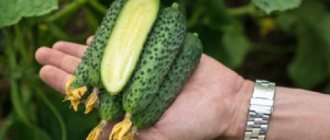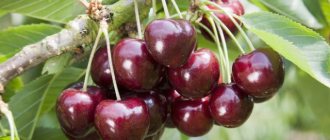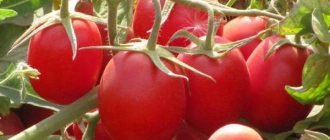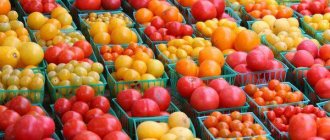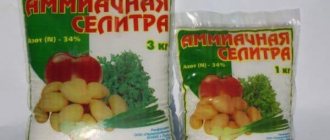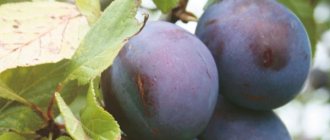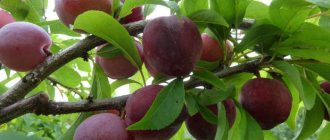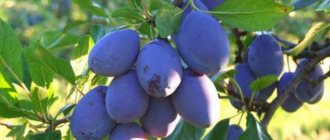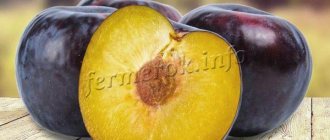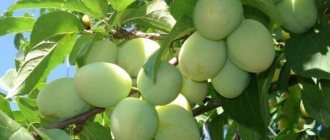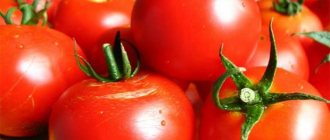Plum for the Leningrad region - the best varieties
Plum is one of the most beloved and widespread fruit trees in our country.
Despite the good viability, when selecting plum varieties for the Leningrad region, it is better to give preference to species adapted to this region. To simplify the selection of the desired variety, the zoning method is used. The Leningrad region, together with the Vologda, Pskov, Tver, Kaliningrad, Novgorod, Yaroslavl, Kostroma regions and Karelia belongs to the North-Western region, which is listed in the State Register as No. 2.
The conditions of the region are quite harsh - frosty winters, high humidity, frequent winds, lack of sun. Therefore, plums for the northwestern region must be winter-hardy, resistant to sudden changes in weather, diseases, especially fungal ones, and not very demanding on the composition of the soil.
Note! When choosing a plum for the northwest, self-fertile varieties should be chosen. An alternative is to plant several plum trees of other varieties to achieve cross-pollination.
What varieties of plums grow well in the Leningrad region
Good health, good harvests and good mood, dear gardeners! Just returned from a short trip. I was visiting a childhood friend who ten years ago went to visit her daughter in the Leningrad region, and stayed there. She and I talked a lot and discussed a topic that was important to us.
A friend of mine is a gardener by vocation. She boasted about new seedlings that had just begun to bear fruit. I really envied her when I saw what kind of fruit she was picking from the branches. So, plums for the Leningrad region - varieties and their advantages. I’ll tell you about everything I saw with my own eyes or heard.
Plum for the Leningrad region - the best varieties
The best option for special climatic conditions is a compact tree with good frost resistance, the ability to recover if the buds freeze, and resistance to fungal diseases, which often develop due to waterlogging of the soil.
Fortunately, the variety is quite wide - from old, time-tested to new, still little-known species, but which have already earned many good responses.
The best plum varieties for the northwest and their descriptions
Early:
- Red early ripening. One of the oldest subspecies, which has retained its popularity to this day. Bred by folk selection, it is valued for its stable productive yield and early ripening period. The fruits are quite large - up to 20g in weight, round. The skin is dense, pale pink in color with a slight waxy coating. The pulp is light, dense, not very juicy. The taste is sweet, the aroma is unexpressed. The bone is small and easily separated. Plums are suitable for fresh consumption and processing. Winter hardiness is high, but there is a threat of freezing during spring frosts. In most cases, the tree is restored. The plant is self-fertile, but in the presence of a pollinator the yield increases.
- Early ripening is round. Another representative of an ancient species. It serves as the basis for the development of many new improved varieties. It is distinguished by its excellent adaptability to various climatic conditions, with a yield of up to 140 centners per hectare. The fruits are small - up to 12g, round in shape, rich blue-violet color. The pulp is yellow-orange, juicy, the taste is sweet and sour, with a pronounced plum aroma. Universal in use, easily transported and stored. The plant is self-sterile.
- Alyonushka. A bright representative of the Chinese plum. It is distinguished by a shape of shoots and leaves unusual for our country - in appearance it is more similar to a peach tree, reaching a height of 2.5 m. It is characterized by good resistance to diseases (clusterospiriosis, moniliosis). This table variety has earned its popularity due to its excellent quality. The plums are very large, massive - reaching 40g in weight, round. The color is a beautiful rich pink, almost red. The middle is bright orange, not too dense, but very juicy. The taste is wonderful, sweet with a slight sourness. The bone is not large, but is difficult to remove. Quite a new variety for our latitudes, average flowering time, self-sterile. The bark is highly resistant to freezing. The harvest can be harvested from mid-August.
- Volga beauty . Very popular due to its excellent yield parameters and fruit quality. The plant is tall and grows quickly. The fruits are large, weighing 30-40g, round, slightly flattened at the base. The skin is dense, red-blue with a rich coating, and easily peels off. The stone is medium, easily separated. The pulp is light orange, soft, juicy, with a balanced sweet and sour taste. It is characterized mainly as a dessert variety, but is quite suitable for processing. It can withstand transportation only if the crop is harvested in a state of technical maturity. The age of fruiting is 4 years; it bears fruit in full force starting from the 6th year after planting. Productivity is stable and high. Self-fertile, but in the presence of pollinators, it appears much better. Another feature of this variety of plum is its method of propagation - using cuttings. In the spring, the pagon is grafted onto the rootstocks of Skorospelka red. Requires light soils, sunlight, and constant crown formation. High winter hardiness, not affected by diseases, rarely suffers from pests, but can sometimes be endangered in the form of plum moth or cherry elephant. Does not tolerate root soaking well.
- Eurasia 21 . A promising, highly productive hybrid, the result of crossing domestic plum, cherry plum, American and Chinese plum. Bred at the Voronezh Scientific Research Institute and entered into the State Register in the late 80s. The tree is large, with a spreading crown. It is characterized by the endurance of roots and flower buds to low temperatures and thaws. The fruits are medium compact in size - up to 30g, dark cherry color with a blue waxy coating. The pulp is dense, juicy, bright orange. The taste is pleasant, refreshing, sweet and sour with a light plum aroma. The bone is small and difficult to separate. Transports well and stores well. It is defined as a table variety, but is often used for making juices and canning. The plant is self-sterile. Good pollinators are Rencold kolkhoz, Rencold Kuibyshevsky. Fruits from the 4th after planting. Productivity is good and increases significantly under favorable weather conditions. Requires careful crown formation.
Mid-season:
- Emma Lepperman . High-yielding subspecies of Western European selection. The plum tree has taken root especially well in Karelia and the Kaliningrad region. The tree grows profusely and requires constant pruning. Responds to additional care and feeding. Loves loamy fertile soils. Under favorable weather conditions, the yield can be more than 250 centners per hectare. The fruits are large - up to 45g, round in shape. The skin is strong, beautiful yellow with pale pink sides. The pulp is pale yellow, juicy, crisp, rich in taste and pleasant aroma. The seed is large and easily removed. Requires cross-pollination.
- Gift to St. Petersburg . It is a hybrid of Chinese plum and Pioneer cherry plum. Medium sized plant. The fruits are small, weighing 10-15g, oval in shape. The skin is thin, bright yellow in color. The interior is dense, rich yellow in color, has a refreshing taste and pronounced aroma. The fruit is universal in use, tolerates transportation well, and is characterized by good keeping quality. High and stable productivity, adaptability to various weather disasters. A pleasant feature is that the tree is able to regenerate itself after the buds freeze and withstands thaws. Another advantage is early pregnancy. The tree begins to bear fruit by the age of 3.
- Edinburgh . A well-known variety of Western European origin. The tree is tall, the crown is branched. The fruits are large - up to 35g, round in shape, dark red or red-violet in color. The pulp is crispy, juicy, green-yellow. The skin is strong and not prone to cracking. It is valued for its high yield - up to 250 centners per hectare. An excellent feature is the self-fertility of the culture.
The best varieties suitable for a given region
Many varieties have been bred for the Leningrad region. The same varieties take root well in the Urals in the Volga region, they are resistant to temperature changes, prolonged cold snaps and winter hardiness. The best plum varieties for the Leningrad region are popular among gardeners in other regions.
Ochakovskaya yellow
A tasty plum variety, characterized by increased care requirements. Productivity is average, it tolerates frosts and temperature changes with difficulty, prefers the southern climate. The fruits are prone to cracking and fall off in windy weather. Ochakovskaya yellow is not grown for commercial purposes; the crop requires pollination from neighboring plum trees. It does not bear fruit every year.
Despite all its shortcomings, Ochakovskaya yellow is loved by gardeners in the Leningrad region for the extraordinary juicy sweet taste of ripe fruits; trees are easily propagated by cuttings.
Collective farm farmhouse
A variety that has been proven for decades and has not lost popularity among gardeners in the Leningrad region. The collective farm Renklod was created by Ivan Vladimirovich Michurin by crossing sloe (wild plum) with green Renklod. As a result, the plum inherited excellent frost resistance and resistance to temperature fluctuations.
Gift to St. Petersburg
Hybrid cherry plum, zoned for cultivation in the Leningrad region in the late nineties. The genetic advantages of the Gift to St. Petersburg include high productivity, disease resistance, and frost resistance. Wood can quickly recover from mechanical damage.
The main disadvantage is the inability to self-pollinate.
Etude
An improved mid-early plum variety, characterized by increased winter hardiness. The plum garden will bear its first harvest in the fourth year of life of the young seedlings. Etude refers to self-sterile varieties of fruit trees.
The purpose of the variety is for table use and is excellent for growing on personal plots. Does not require special additional shelters in winter. Resistant to fungal diseases and pests.
Red early ripening
Grown in the Leningrad region since the late forties. Red early ripening is a beautiful variety of plum trees; a small, neat tree adorns the landscape of personal plots. Withstands frosts down to -38 C, the variety is self-fertile, unpretentious, and adequately tolerates both drought and waterlogging of the soil.
Early ripening round
The variety belongs to the Leningrad selection and was bred specifically for this region. The advantages of Skorospolka round include early ripening and high taste qualities of ripe fruits. Tolerance to frost and temperature changes is average; in severe winters trees can freeze completely. Companions are required for pollination. Skorospolka round is a self-sterile variety.
Emma Lepperman
A plum variety of German selection, popular in the Baltic states and Poland, where it is grown for commercial purposes. Emma Lepperman has taken root well in the North-West region of our country, requires cross-pollination, and has high productivity. A nuance of care - trees need systematic pruning. In the West, the variety is considered one of the most profitable.
Edinburgh
High-yielding English winter-hardy columnar plum variety. The tree is genetically resistant to clasterosporiosis and self-fertile. The taste of ripe fruits is sweet and sour. Suitable for growing in the Leningrad region.
Oryol dream
A representative of the Far Eastern selection is the Chinese garden plum. Young seedlings bear fruit in the third year of life. The variety is partially self-fertile, frost-resistant, and drought-tolerant. Disadvantages include gradual crushing of the fruit.
Volga beauty
The Samara variety is grown everywhere: in Central Russia, the Volga region, the Leningrad region and other regions. The greatest yield can be achieved in the southern growing regions; the tree is heat-loving and demanding of light. It tolerates drought well and produces a good harvest. Plum trees are most vulnerable to frost during the flowering period.
If there is excess moisture, the fruits crack, and the fresh shelf life of the crop is limited.
Alyonushka
Chinese plum of Oryol selection. The plant's winter hardiness is average, but the trees are able to tolerate temperature fluctuations in the spring and autumn. The yield is small, but the tree bears fruit every year. The variety is genetically resistant to hole spot and moniliosis.
The disadvantages of Alyonushka include the predisposition of trees to aphids.
Northwest climate
To understand what climate prevails in the northwest, you should carefully study the weather conditions of St. Petersburg. Its residents rarely see the sun, but it rains almost every day in this region. The climate of the northwest is continental.
Due to the high humidity in this area, the development of most plants occurs completely differently. Those varieties that need to be planted in the southern and northern regions will constantly lag behind in development, get sick and reduce their yield levels. The reason is severe frosts that do not subside until the beginning of May. You should study in advance the best self-fertile plum varieties for the Leningrad region, since most universal pollinators cannot grow in such climatic conditions.
Endurance and unpretentiousness
Have you been to St. Petersburg? If yes, remember what the sky is like there. Usually gloomy, gray. It rains often. Due to high humidity, gardens are more susceptible to rot and other fungal diseases.
Severe winters also pose a danger. Where dachas are located close to the forest, animals may chew on the bark in winter. Therefore, growing plums involves using only hardy, winter-hardy, best varieties with early ripening. Priority is also given to samples with compact, low crowns - gardeners, as elsewhere, save space.
Taking into account the climatic characteristics of the North-Western region, it is advisable to grow several related self-fertile trees on the site at once. Firstly, they will become pollinators for each other. Secondly, with different ripening periods, they will provide the family with fruit for the summer and autumn.
Taking into account the climatic characteristics of the North-Western region, it is advisable to grow several related self-fertile trees on the site at once. Firstly, they will become pollinators for each other. Secondly, with different ripening periods, they will provide the family with fruit for the summer and autumn.
Ochakovskaya yellow
The Ochakovskaya yellow plum variety is a self-fertile crop. It ripens quite early, 90 days after the start of flowering. The plant begins to bloom in April, and can be harvested as early as July. The tree is low-growing, about 2 m high. The crown is wide, oval in shape.
The fruits are large, ovoid, weighing up to 40 g. The peel is dense, easily separated from the pulp. The color of the pulp is green-yellow. The taste is dominated by sweetness. The variety belongs to universal crops. Can be eaten fresh or used to make desserts.
The best choice
Which plums received the attention of Leningrad summer residents? Based on reviews, based on my friend’s personal experience, I can give successful examples.
- Red early ripening. A “folk” tree, it is almost impossible to establish the authorship of the breeder. The fruits are small (up to 20g), oval-shaped, reddish with a bloom. The pulp is dry and dense. The taste is a solid B. The bone comes off well. One of the first to bear fruit.
- Early ripening is round. An old selection variety. Ripens early, the fruits are red-bluish, small (no more than 12g). The advantages include an easily separated seed, a rich sweet and sour taste, excellent winter hardiness, and high adaptability to adverse weather conditions.
- Renkold collective farm Michurin selection. It is widespread not only near St. Petersburg, but also in the Middle Zone in general. The height of mature trees is average, the fruits when ripe gain weight up to 20g, are round, yellow-green with a dense peel. Excellent winter hardiness.
The characteristics of the samples I have named are their popularity. By planting any on your plot, you can achieve high, sustainable yields without much hassle. Another plus is that for all varieties, Skorospelka red is the best pollinator. Even if it does not grow on your site, your neighbors will probably have such a tree.
I have listed only a few plums adapted to the climatic conditions of the North-West. Do you have extensive experience as an amateur gardener? You can try growing other zoned varieties: Emma Lepperman, Edinburgh, Eurasia-21. Please note that their frost resistance is average.
The characteristics of the samples I have named are their popularity. By planting any on your plot, you can achieve high, sustainable yields without much hassle. Another plus is that for all varieties, Skorospelka red is the best pollinator. Even if it does not grow on your site, your neighbors will probably have such a tree.
Collective farm farmhouse
This variety is often called yellow cherry plum. It is ideal for growing in the Leningrad region. Its main advantages include the following parameters:
- frost resistance;
- the ability to quickly recover from stress;
- disease resistance;
- excellent taste.
Renklod collective farm plum has an excellent taste
Among the main disadvantages, only the property of self-sterility is distinguished. For this reason, pollinator plants should be planted next to this tree. The Moscow Hungarian and the Russian Kolkhoz Woman are considered ideal options.
The tree grows up to 4 m. The crown is wide, oval in shape. The fruits are medium in size, weighing up to 40 g. The taste is pleasant, sweet, without bitterness or sourness. The pulp is juicy, but not watery, yellow-green in color. This yellow plum is suitable for all-purpose use. It can be eaten fresh, used for making desserts or winter preserves.
Gift to St. Petersburg
This variety was bred in Russia as a result of crossing the Chinese early-fruiting cherry plum and the Pioneer cherry plum. The tree is quite low, its height is only 2.5 m. The crown is short, oval in shape. Flowers and fruits are formed on shoots and branches. Up to 4 flowers are formed on each bud, which can significantly increase the yield of the species. The tree begins to bear fruit 3-4 years after planting in a permanent place.
The fruits are characterized by an ovoid shape, weighing up to 20 g. Their color is yellow, with a slight red blush, which occupies 30% of the plum area. The abdominal seam is quite difficult to notice. The peel is plastic and thin. The pulp has a yellow-green tint. The taste is pleasant, sweet. Bitterness and sourness are absent at the genetic level. The oval bone weighs about 1 g. Suitable for universal use.
This self-fertile variety for the Leningrad region was obtained as a result of crossing Eurasia and Krasavitsa Volzhskaya. The variety belongs to the mid-early varieties. The growing season, from the moment of flowering, lasts for 120 days. The main stem and flower buds are frost resistant. This cherry plum variety has good immunity against parasites and diseases. The tree grows up to 5 m. The crown is broadly oval in shape. The fruits are also oval in shape and are medium in size. The weight of one fruit can reach 40 g. Its surface is covered with a dense layer of waxy coating. The color is red, with a purple tint.
The pulp is dense, pleasant, juicy in taste, yellow in color. The fruit is rich, sweet, with a slight sourness. Suitable for universal use. Can be used for preservation for the winter or eaten fresh. Products of this variety are often used to prepare baby food.
Plum Etude is rich, sweet and slightly sour
Additional factors for variety selection
The climate of the North-West is characterized by short showers, fogs, chilly dampness, and the sun is in great short supply here. In such conditions, the plum must have appropriate immunity.
Resistance of flower buds
Frosts and winter thaws in the North-West “hit” flower buds - the key to the future harvest. The weakest varieties in this regard are:
- Pchelnikovskaya is a mid-season self-sterile plum; In general, it has good winter hardiness; flower buds become most vulnerable at the junction of winter and spring.
- Pavlovskaya yellow is a relatively resistant variety against fungal diseases; in some years it experiences aphid invasions; remarkable for regular fruiting; flower buds freeze in winter at temperatures below -27°C.
- Primorskaya is a variety of Ussuri folk selection; produces small volumes (10–12 kg), but regular yields; the fruits are yellow; during long-term storage they keep their shape, but lose their taste. Frost resistance of wood is high, resistance of flower buds is average.
- A gift to St. Petersburg - an early variety, a 10-year-old tree produces 27 kg of yellow, tasty fruits that tend to fall off; resistance to clasterosporium blight is high; flower buds suffer from recurrent frosts.
Flower buds do not freeze out in the following varieties:
- Stanley is an “American”, obtained by crossing the French plum Pruneau d'Agen and the American Grand Duc. The variety embodies the qualities of Hungarians and the ovoid shape of the fruit. The resistance of flower buds to freezing is proven by the 92-year life history of the Stanleys.
Stanley plum can live for a very long time
- Renclod Tambovsky - remarkable for its crown, which grows more in width than in height, which should be taken into account when planting; The fruits are black and purple, bear fruit from the 3rd year.
- Black Zyuzina - named after the village of Zyuzino, where this variety was bred; late ripening period; The color of the fruit is deep blue; processed plums retain their rich color.
- Early renklod - ripens at the end of July, the fruits are greenish-yellow in color, under the thin sour skin there is dense pulp with a honey flavor.
I like the Stanley (or Stanley) plum variety. The variety is high-yielding. The fruits are very beautiful, large, oval, dark blue. The taste is sweet and sour. It can be canned and dried. They are very tasty when dried.
Tisa
https://chudo-ogorod.ru/forum/viewtopic.php?f=51&t=866
Wind resistance
In a region where heavy winds and even tornadoes are not uncommon, the motto for choosing a variety is the lower, the better. Plum varieties do not exceed 2.5 m:
- Candy,
- pyramidal,
- Renklod Tenkovsky,
- Red ball.
The Omskaya nochka, whose height reaches a maximum of 1.4 m, looks like a midget compared to others. Tall plums (Yakhontovaya, Anna Shpet) are grafted onto a dwarf or weak-growing rootstock.
A few years ago my Anna Shpet was knocked over on her side by a strong wind, tearing off part of her roots. If you periodically experience hurricanes, then consider Anna Shpet as a consumable item. The fruits are completely unsuitable for freezing. After defrosting, the taste deteriorates sharply, the pulp turns into a gelatinous mass. In this sense, Anna Shpet is not a competitor even to some rootless cherry plum or thorn.
bauer
https://forum.vinograd.info/showthread.php?t=11043
Alyonushka
The self-fertile variety Alyonushka is characterized by early ripening - 100 days after flowering.
The tree can reach a height of 2 m. The crown is pyramidal in shape, its density is average. The leaves of this plum look a little like peach leaves. This variety is self-fertile, so the Russian Economic and Chinese Self-fertile varieties, which are pollinators, should be planted next to it.
The fruits can reach a weight of 40 g. The shape is round. The color is dark red, without impurities. The flesh is medium dense and has a rich orange tint. The taste is sweet, with a slight sourness. The stone, which weighs 1 g, is quite difficult to separate from the pulp. The fruits ripen in mid-August.
Variety Alleynaya
Alleynaya plum is a compact plant: its average height is 3 m. The growing season lasts only 110 days from the moment of flowering. The root system is characterized by a closed type. The crown of the tree is wide, oval in shape. Flowering begins in early April, and harvesting can be done as early as the end of July. The plant begins to bear fruit 2 years after planting in a permanent place.
The fruits are small, weighing about 30 g. Their color is red, with a slight purple tint. The pulp is light yellow. The peel is dense, which protects the fruit from cracking and deformation. The taste is cancelled, sweetness predominates. Suitable for universal use. Productivity is high. From 1 tree you can collect about 40 kg of selected products.
Difficulties in growing plums in the Leningrad region
Unpredictable weather occurs in the Leningrad region, where winter with thaws resembles spring, and summer does not indulge in generous warmth every year. Spring here is damp and cool, so natural pollinators often experience bad weather. The thermometer reaches the positive sector of the scale usually in early April, and the daily average of 15°C is established in the second half of June. The east of the region is the coldest, and more or less comfortable warmth is in the southwest.
The region is not rich in agricultural land either. Plum prefers soils with a neutral level. Suitable soddy-carbonate soils with a neutral pH level of 7. And such lands are located only on the Izhora Upland (Lomonosovsky, Gatchina, Volosovsky districts). The rest are acidic to varying degrees - soddy-podzolic (pH 3.3–5.5) and podzolic (pH 4.0–4.5), and also poor in phosphorus and nitrogen.
Planting plums in acidic areas is preceded by liming the soil.
When planting plum trees, the desired height of the groundwater level is 1–1.5 m. But swampy soils and spring floods are common in the Leningrad region. Such soils require drainage, and the tree is planted at an elevation of 0.6–1.2 m. The diameter of the artificial embankment is from 2.5 to 3 m.
Video: how to plant a fruit tree on a hill
It turns out that growing plums in the Leningrad region is associated with a certain risk. When choosing a variety, the emphasis is on those properties that will allow the tree to take root in difficult conditions.
How not to make a mistake with the variety
Buy seedlings from a nursery where they will offer you a specific variety. Buying online or at the market can be fraught with confusion and complete disappointment.
I have something like “Renklod collective farm”, yellow-green transparent skin, tasty, large. This is where the advantages end. The stone separates poorly, cracks during rains, abundant fruiting is very rare (it’s good if after three years), often without a harvest at all. I held it for a long time and finally removed it.
Crow
https://www.websad.ru/archdis.php?code=775533
Meanwhile, the real Renklod collective farm bears fruit every year, and its seedlings serve as excellent rootstock material. The disadvantage is the shedding of overripe fruits.
The Renklod kolkhoz plum does not surprise you with its external beauty, you just have to try it
Landing Features
All varieties of plums for the Leningrad region are characterized by general planting stages. You need to choose a quality seedling. It is best to focus on 2-year-old seedlings, the height of which is 50-70 cm. The yield will also depend on the soil in which the tree is planted. The soil for planting should be chosen fertile, with a low acid-base balance (no more than 5%). Planting should take place in March. A hole is dug in advance, the parameters of which are 60x80 cm. You need to pour 10 kg of humus into the bottom and carefully water it with water.
After 12-14 days, you can plant the seedling. The roots are densely distributed along the entire perimeter of the hole. They need to be covered with earth and compacted. After this, water the tree with 10-20 liters of warm water. You need to dig a small shaft around it, into which water will be poured for irrigation. Planting scheme: 3 trees per 1 m2.
Rules of care
Planting a seedling is only part of the work done. It is important to remember that every plant needs complete and high-quality care. Watering is carried out according to certain rules.
- You can water only in the morning or evening so that the sun's rays do not evaporate moisture from the soil.
- You can only water with warm water, as it is better accepted by the roots.
- Watering interval - once every 7-10 days.
- At least 10-20 liters of water are poured under each tree.
Feeding is carried out several times during the entire growing season. The first, using potassium and nitrogen (20 g of ammonium nitrate and 30 g of potassium nitrate per 10 liters of water) is carried out before flowering begins. The second feeding (dilute 40 g of superphosphate in 10 liters of water) is carried out 10 days before fruiting.
10 days before fruiting, the plum must be fertilized with a superphosphate solution
Features of choosing varieties
Experienced gardeners advise planting a group of trees: 2-3 varieties from each variety (subspecies) of plum - domestic, Chinese, Canadian and Russian (hybrid cherry plum).
Plum garden with different varieties of trees.
Depending on the weather, the season may be problematic for one subspecies, but quite favorable for another.
- Chinese plum is the most frost-resistant, but its hardiness decreases in the case of winter and early spring thaws, with sudden temperature changes.
- Home plum is not too afraid of contrasting temperatures, but freezes in cold winters.
- Hybrid cherry plum ( Russian plum ) – has intermediate winter hardiness; most resistant to damping off of the root collar.
For successful pollination, the garden must have trees of the same subspecies with synchronous flowering . Some varieties of different subspecies also cross-pollinate with each other, since they have a hybrid origin.
Home plum varieties
Hungarian Pskov
This is a form propagated by amateur gardeners.
Self-fertile, winter-hardy, with good taste.
- Plums ripen in late summer or early autumn and do not crack or rot.
- They are slightly oval, weighing 25 g .
- The color is violet-burgundy, with an intense bluish tint.
Hungarian Pulkovskaya
A folk variety common in the Leningrad region.
Hungarian Pulkovskaya is an old variety that appeared in the middle of the last century.
It is also found under other names: Pokrovka, Zimovka, Zimnitsa, Winter Red . In 1959, the variety was included in the State Register.
- Successfully reproduces by shoots . It is a good pollinator for other varieties of domestic plum.
- It stands out for its reliability, self-fertility and excellent productivity .
- Winter hardiness – average.
- The trees are durable , tall (up to 5 m ), with a sparse spreading crown; They develop poorly in swamps and heavy clays.
- Ripening is later (second - third ten days of September), extended, without shedding. Plums weighing up to 25 g, oval, with a clear seam .
- The skin is thick, with a strong waxy coating; color ranges from reddish-purple to blue-violet. The bone is detachable, medium size. The pulp is light yellow, juicy, sourish-sweet. The taste is satisfactory.
- The degree of damage by aphids is low, and by hole spotting is medium . In wet weather, the fruits crack, rot, and develop pockets.
Ochakovskaya yellow
Another name is Latvian yellow egg. An ancient folk variety, can be propagated by shoots.
Plum varieties for the North-West
The varieties recommended for the Leningrad region will grow quite successfully in other regions of the North-West of the country.
You can expand this list:
| Name of plum variety suitable for the Leningrad region and the North-West | Feature of origin (if any) | Ripening period | Productivity (kg per tree) | Tree height | Crown shape | Fruit | Self-fertility | The best pollinating varieties (for the Leningrad region and the North-West) |
| Red meat big | Late | Up to 20 | Vigorous (up to 4 m) | Compact, rare | About 25 g, dark crimson with a bloom, juicy, sweet and sour with a “bitterness” near the skin | No | Hybrid cherry plum, Skoroplodnaya | |
| Smolinka | Average | Up to 25 | Vigorous (up to 5–5.5 m) | Oval or rounded-pyramidal | 35–40 g, dark purple with a thick bluish coating, sweet and sour taste, delicate | No | Volga beauty, Morning, Skorospelka red, Hungarian Moscow | |
| Tenkovskaya dove | Average | Around 13 | Average | Broadly pyramidal, dense | Up to 13 g, dark blue with a strong coating, sweet and sour | No | Renklod Tenkovsky, Skorospelka red | |
| Award (Rossoshanskaya) | Late | Up to 53 | Vigorous | Oval, medium thickness | 25–28 g, greenish with a rich dark red “blush”, juicy | No | ||
| Vigana | Estonian variety | Late | 15–24 | Low-growing | Weeping, medium density | About 24 g, burgundy with a strong patina, sweet with “sourness” | Partially | Sargen, Hungarian Pulkovskaya, Skorospelka red, Renklod collective farm |
| Lujsu (Liisu) | Estonian variety | Early | 12–25 | Average | Well leafy, dense | 30 g, red-violet with golden “dots”, has a coating, dessert taste | No | Renklod Tenkovsky, Morning, Red skorospelka, Pulkovskaya Hungarian |
| Sargen (Sargen) | Estonian variety | Average | 15–25 | Low-growing | Widely oval, thick | 30 g, burgundy-violet with golden “dots”, dessert taste | Partially | Ave, Eurasia 21, Collective Farm Renklod, Red Skorospelka, Reward |
Self-fertile plum varieties for the North-West
Among the self-fertile and partially self-fertile plum varieties suitable for the North-West (including the Leningrad region), it is certainly worth mentioning the following:
| Name of plum variety suitable for the Leningrad region and the North-West | Feature of origin (if any) | Ripening period | Productivity (kg per tree) | Tree height | Crown shape | Fruit | Self-fertility | The best pollinating varieties (for the Leningrad region and the North-West) |
| Hungarian Pulkovo | Late | 15–35 | Vigorous | Wide, spreading | 20–25 g, dark red with “dots” and a bluish tinge, sweet with “sourness” | Yes | Winter red, Leningrad blue | |
| Hungarian Belarusian | Average | About 35 | Medium (up to 4 m) | Spreading, not very dense | 35–50, blue-violet with a strong bloom, sweet and sour | Partially | Victoria | |
| Victoria | English variety | Average | 30–40 | Medium (about 3 m) | Spreading, "weeping" | 40–50 g, red-violet with a strong bloom, juicy, very sweet | Yes | |
| Tula black | Mid-late | 12–14 (up to 35) | Medium (from 2.5 to 4.5 m) | Dense, oval | 15–20 g, dark blue with a reddish tint, with a thick coating, sweet with “sourness” near the skin | Yes | ||
| Beauty TsGL | Average | Average | spherical, compact | 40–50 g, blue-violet with a bloom, sweet and sour, juicy | Partially | Eurasia 21, Hungarian |
Yellow plum for the North-West
To the varieties of plums with yellow integumentary coloring of fruits that can grow in the climatic conditions of the Leningrad region, it is worth adding a few more that can take root in the gardens of the North-West:
| Name of plum variety suitable for the Leningrad region and the North-West | Feature of origin (if any) | Ripening period | Productivity (kg per tree) | Tree height | Crown shape | Fruit | Self-fertility | The best pollinating varieties (for the Leningrad region and the North-West) |
| Renklod Kuibyshevsky | Mid-late | Up to 20 | Low-growing | Dense, hay-shaped | 25–30 g, greenish-yellow with a bluish tinge, juicy, sweet and sour | No | Collective farm greenweed, Volga beauty, Skorospelka red | |
| The Golden Fleece | Mid-late | 14–25 | Average | Thick, “weeping” | About 30 g, amber-yellow with a milky coating, sweet | Partially | Skorospelka red, Eurasia 21, Volga beauty | |
| Emma Lepperman | German variety | Early | 43–76 c/ha | Vigorous | Pyramidal, rounded with age | 30–40 g, yellow with blush | Yes | |
| Precocious | Chinese plum | Early | Around 9 | Average | Fan-shaped | 20–28 g, yellow with a “blush”, aromatic, juicy, sweet and sour | No | Red ball, any varieties of hybrid cherry plum |
Released and promising plum varieties for gardeners in the North-West
The correct selection of varieties for each region, each specific garden is decisive in obtaining high plum yields. Practice shows that seedlings of varieties of this crop, imported from regions with a milder climate, usually freeze out in the conditions of the North-West. It is more reliable to grow on your plots proven and recommended by the state commission varieties zoned for each region and new promising varieties recommended by scientific institutions for the conditions of the North-Western region.
Plum varieties
to the greatest extent should combine such characteristics as winter hardiness, self-fertility, high yield, taste of fruits, resistance to diseases and pests. Preference is also given to varieties with small, compact crowns, which are suitable for compacting plantings and convenient for caring for the crown and collecting fruits. It is advisable to have 4-5 trees in the garden of different ripening periods and with fruits of universal use.
The zoned assortment of plums in the North-Western region is represented by the following varieties: Skorospelka red, Skorospelka round, Vengerka Pulkovskaya, Renklod kolkhozny, Livlyandskaya yellow egg (Ochakovskaya yellow) - for the Leningrad, Pskov and Novgorod regions and Western European varieties Victoria, Emma Lepperman, Edinburgh - for the Kaliningrad region areas.
Long-term study of plums at the Pavlovsk Experimental Station VIR and the Leningrad Fruit and Vegetable Experimental Station indicates the possibility of successfully growing varieties bred from the Volga region and some other regions in the North-West region. The promising group includes the following varieties: Volzhskaya Krasavitsa, Mirnaya, Druzhba, Smuglyanka (Kuibyshev Horticulture Experimental Station), Volgogradskaya, Ternosliv, Dubovsky, Zolotoe Fleece (Dubovsky fruit and grape stronghold of the Volgograd region) and a variety of folk selection of the Moscow region - Chernaya Zyuzina. Below is a description of the main regionalized promising varieties.
Plum varieties for planting in the Leningrad region - care tips. Press!
The Leningrad region is the northernmost region where it is possible to grow stone fruit crops.
Gardeners need to remember that to get a good harvest, you need to purchase only zoned varieties.
For the North-Western region, varieties such as Renklod plum, self-fertile plum of the Vengerka variety, Alyonushka plum, and Kuban Comet are suitable.
Varieties whose names speak for themselves take root well. These are Skorospelka red and Skorospelka round. With our short warm season, early ripening is a big advantage over other varieties.
Plum varieties such as Eurasia and Victoria are also well suited for growing in our region.
All of these varieties are distinguished by good winter hardiness, high yields during the fruiting period, and resistance to diseases and pests.
Planting stages
It is better to plant plums in the North-West region in the spring. When planting in autumn in our climate zone, the roots may freeze out without having time to take root well.
Observe the following order:
- First of all, you need to determine the distance between the landing holes.
If medium-sized varieties are planted, then the distance between plants should be at least 2-3 meters in a row. For taller varieties, these dimensions increase by 1.5-2 m. If the plants are planted not in one, but in several rows, then the distance between the rows should be about 4-4.5 m. Such dimensions give the plum, when growing, sufficient sunlight and space for good development of the root system. The hole for the seedling is dug 2-3 weeks before planting. The depth and width should be about 60 cm. A stake is immediately driven in to secure the plant, preferably on the north side of the seedling trunk. It is necessary to maintain a distance of at least 15 cm between the tree and the garter stake.
Prepared planting pit for plum
Fertilizer is added. This can be complex mineral fertilizer and humus. It is worth considering that when planting you need to add chalk, slaked lime or dolomite flour. The entire composition is mixed with fertile soil and left in such a form that the soil settles slightly before planting. Before planting, fertile soil is poured into a mound at the bottom of the hole, a seedling is placed on it and the roots are spread evenly throughout the planting hole. Then they begin to cover the roots with soil. During the process of falling asleep, the seedling is slightly shaken so that voids do not form and the soil is evenly distributed. You can lightly compact the soil, being careful not to damage the root system and trunk.
Please note: it is necessary to ensure that the seedling is not deeply buried. The root collar should be 3-4 cm above ground level. After the earth settles and compacts, the tree will be planted at ground level.
After planting and light compaction, the trunk is tied to a peg, but so as not to subsequently injure the bark of the seedling. It should be a soft hemp rope, but in no case wire. The plant is well watered and the tree trunk is mulched with peat or old sawdust.
